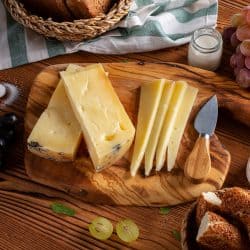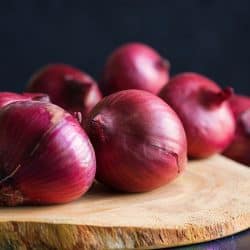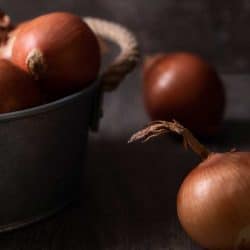Warm, comforting, and filling, few foods serve up taste like a good bowl of French onion soup. But getting the ingredients down pat in just the right way is critical to nailing the flavor. Chief among them, of course, is the onions. So how should you cut them to unlock their full flavor potential? KitchenSeer.com has researched and answered for you down below.
The layers of the cells in an onion run from the root to the stem of the bulb. Cutting with the fibers instead of against them will preserve the integrity of the onion. Doing so means they will last during the deep browning process found in french onion soup recipes.
Most home cooks likely wouldn't imagine cutting onions as a scientific process, but there's a fair amount to it. Continue reading as we delve more into why how you slice your onions does impact their taste and integrity. We will also discuss the best type of onions to use for your soup and how to best cook them.
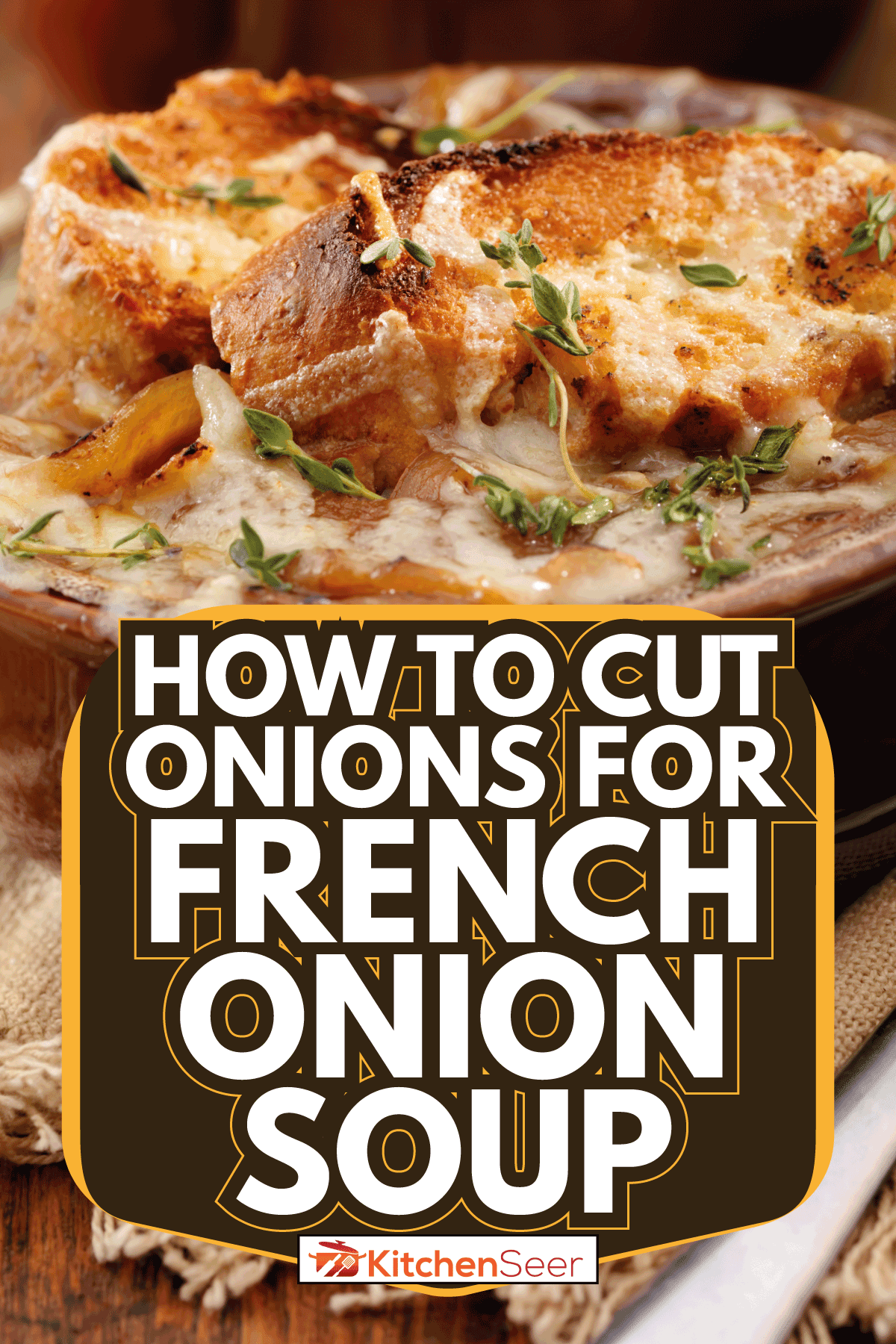
Why the Way you Cut Onions Matters
It may not have occurred to you, but how you cut your onions matters. This fact is accurate in terms of both prep and final product. The direction in which you cut your onions helps cut back on tears and with how your onions maintain in your recipe.
Many chefs are so reluctant to get to chopping their onions, despite how they enhance a seemingly endless number of recipes. The harsh tears onions bring to our eyes make it hard to want to get chopping. But how you cut them when preparing can reduce the impact on your eyes substantially.
Onion Cutting Methods
There are two main ways to cut an onion: Pole to pole and across the equator. Pole to pole cutting cuts the onion stem to root. Cutting across the equator, meanwhile, is a horizontal cut that most cooks utilize. As it turns out, pole-to-pole cutting drastically reduces the potency of cut onion.
As a natural defense mechanism, the cells of an onion contain sulfur and other enzymes working in tandem. When they combine, they make the sulfurous compounds that release upon damage to the onion's membrane and lead to frequent tears in the kitchen.
The cells of onions are longer pole to pole than in a perpendicular direction. That means if you cut pole to pole, you're rupturing fewer cell walls in the onion and releasing less sulfurous compounds into the air and your eyes. This practice won't eliminate tears, but it will reduce the intensity of your struggle in the name of delicious ingredients.
Cutting your onions one of these two ways will significantly impact their usefulness in various recipes. Of course, including delicious french onion soup.
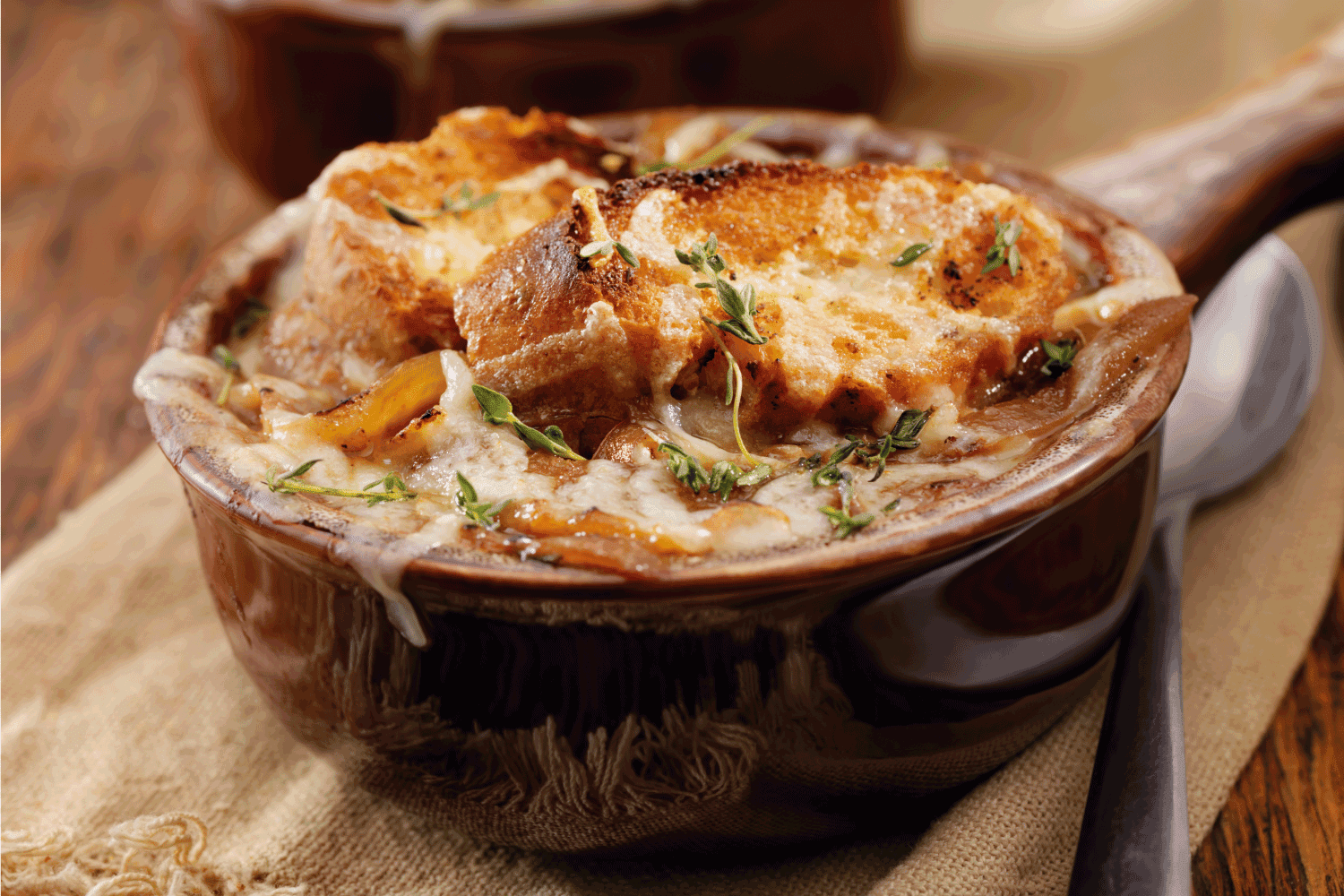
Which Way Do you Cut Onions for French Onion Soup?
French onion soup is a recipe that calls for relatively uniform strips of onion that maintain their shape throughout the cooking process. Unlike dicing and slicing, which is suitable for when you want your onions to incorporate into a sauce, for example, cutting pole to pole is an excellent way to achieve this.
Cut your onion in half vertically, that is, pole to pole, and place half on your cutting board. Cut from north to south in a series of even slices, angling your knife to keep the onion slices even. As you continue to miss your onions, change the angle of your blade to reach the zenith of the dome.
Upon reaching the zenith, flip your onion and do the same thing on the other side. Doing so will give you uniform slices that will cook at the same rate all the way through. This fact is crucial for a recipe like French onion soup.
Read now on KitchenSeer.com: 'How to caramelize onions in the oven'
How Thick Should Onions be for French Onion Soup?
We've gone over how the direction in which you cut onions is essential for maintaining their form. For French onion soup, long solid slices are ideal for the caramelization process, but the size of the pieces takes a back seat to the uniform nature of the cuts.
It's essential to remember that your onion slices will reduce in size during the caramelization process. Your onions will shrink up to two-thirds of their initial size. Experts recommend aiming for pieces between one-fourth and one-half an inch thick and, above all, aim for uniformity.
Slice more onion than you might expect to need, as due to this reduction, you'll end up with far less onion in terms of bulk than you might expect.
If your knife skills mean that one-half-inch thick slices are easier to achieve, go for one-half. The thicker pieces will take longer to caramelize, meaning increased weight. But provided you stay within this range, the onions will caramelize evenly and maintain the desired consistency.
Caramelized onions are easily the star of any good French onion soup. Getting their consistency and the process down, in general, is something you should take care to master.
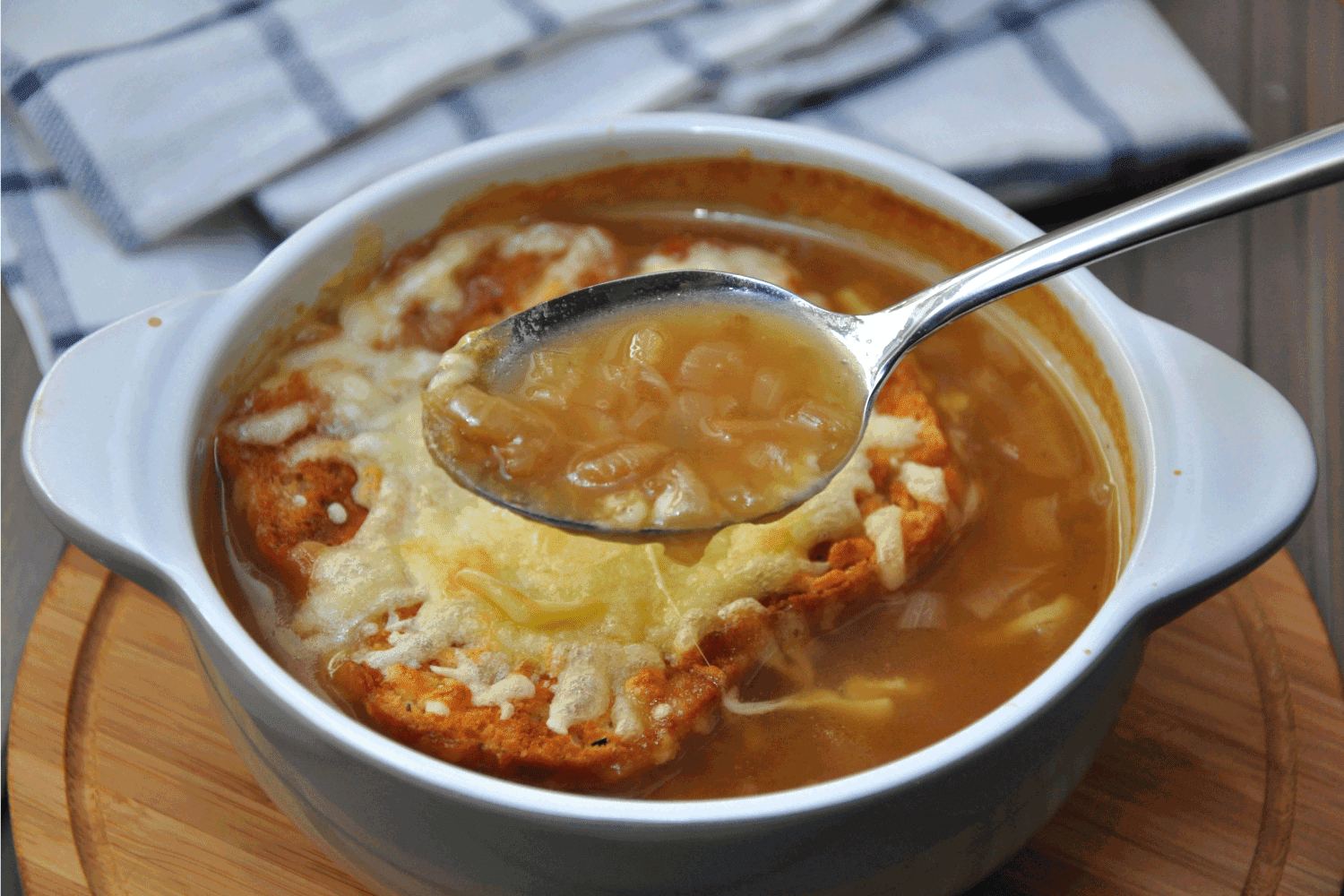
What Onions are Best for French Onion Soup?
When first looking to determine the perfect onion for French onion soup, you might be surprised at the variety you find. Onions are in everything, and several kinds serve different dishes to different degrees. Many onion types out there shine in their raw forms, but that's not what we're looking for when it comes to soups.
White onions are known for their mild yet flavorful profile, making them staples in salads and sandwiches. Red onions offer up a more biting taste, perfect for salsas and dips. Neither of these onions lends themselves well to caramelization or reduction, so with what are we left?
The yellow onion lends itself to cooking dishes so well that many have dubbed it the "cooking onion." The intense flavor found within its layers lends itself well to cooking dishes, including roasts, sautees, and of course, soups.
Yellow onions also last well during the reduction process. If appropriately cut, as mentioned above, they lend the soup a solid yet balanced flavor. Coupled with the sweetness of the caramelization, you'll be good to go.
Read now on KitchenSeer.com: 'Which onion is best for soup?'
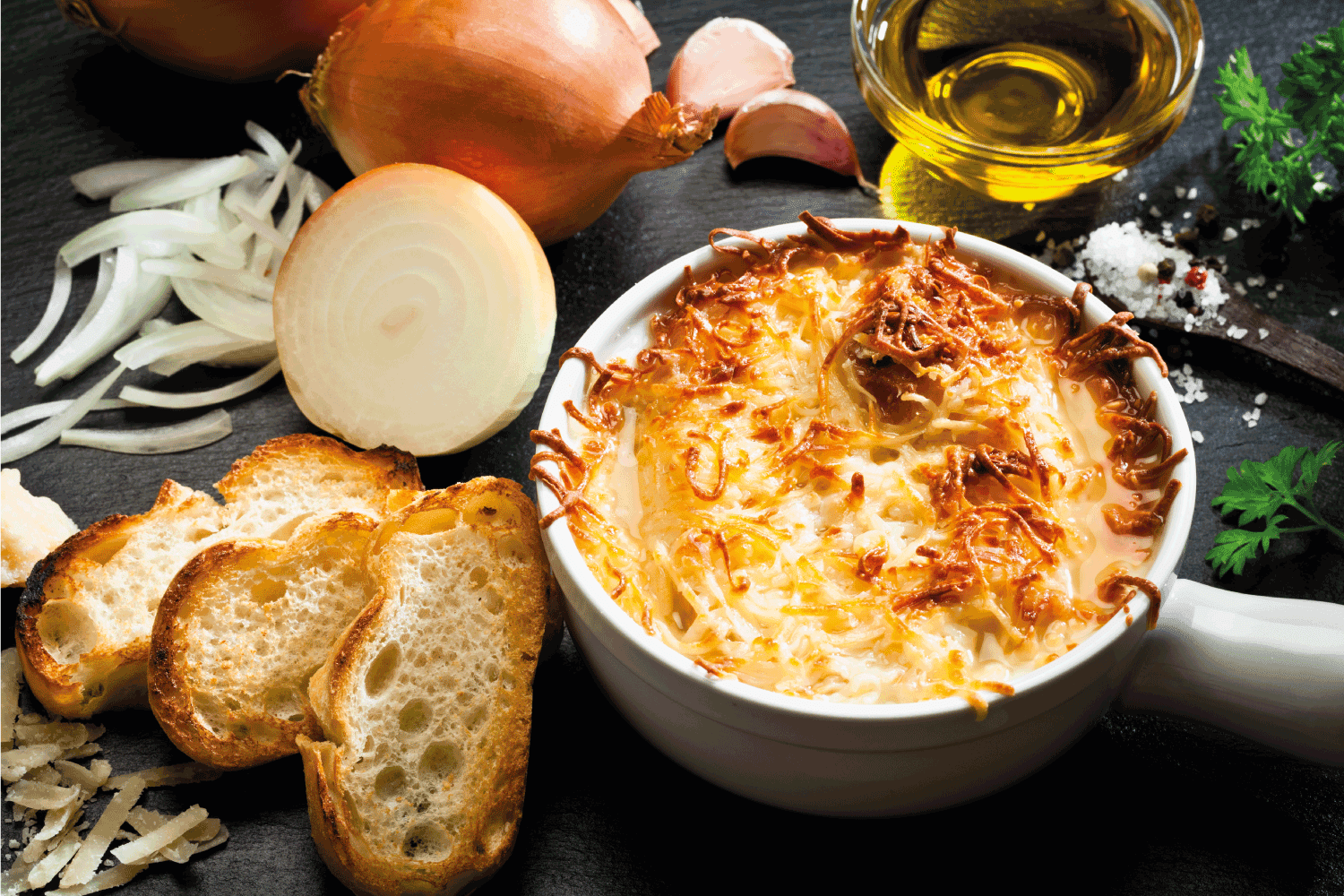
How Long Do you Cook Onions for French Onion Soup?
The caramelization process takes time. It is where the bulk of your preparation for your soup will occur, and trying to rush causes problems. Taking your time and tending to your onions when necessary is the key to having delicious soup at the end.
To begin, head to your stovetop and melt unsalted butter over medium heat in a large saute pan. You can substitute the butter with olive oil if you prefer. Add in your sliced onions. Make sure to gently stir them every two to three minutes for the next 15 to 20 minutes.
It would help if you let the onions cook before vigorously stirring them. If you go at it too quickly, you'll miss the delicious brown crisp that comes from initial caramelization. This outer crisp is where so much of your flavor happens. So you'll need to be patient.
Your temperature will be low enough that your onions won't burn at these heats. So don't worry about keeping them moving. Letting your onions sit will increase the flavor exponentially.
Caramelization
After about 15 to 20 minutes, your onions will be caramelized. At this point, they're ready to be added to a burger or soup for an incredible wallop of flavor. But for something like French onion soup, you can caramelize them even further if you want a more robust taste.
Simply turn the heat down to low and gently stir the onions every five minutes for an additional 20 to 25 minutes. This extended time gives you extra caramelized onions over 40 to 45 minutes.
Take care not to over-caramelize your onions, as they can quickly become bitter and mealy if overworked. But so long as the onions are a rich dark brown and still soft and translucent, you'll have the fantastic flavor you're looking for.
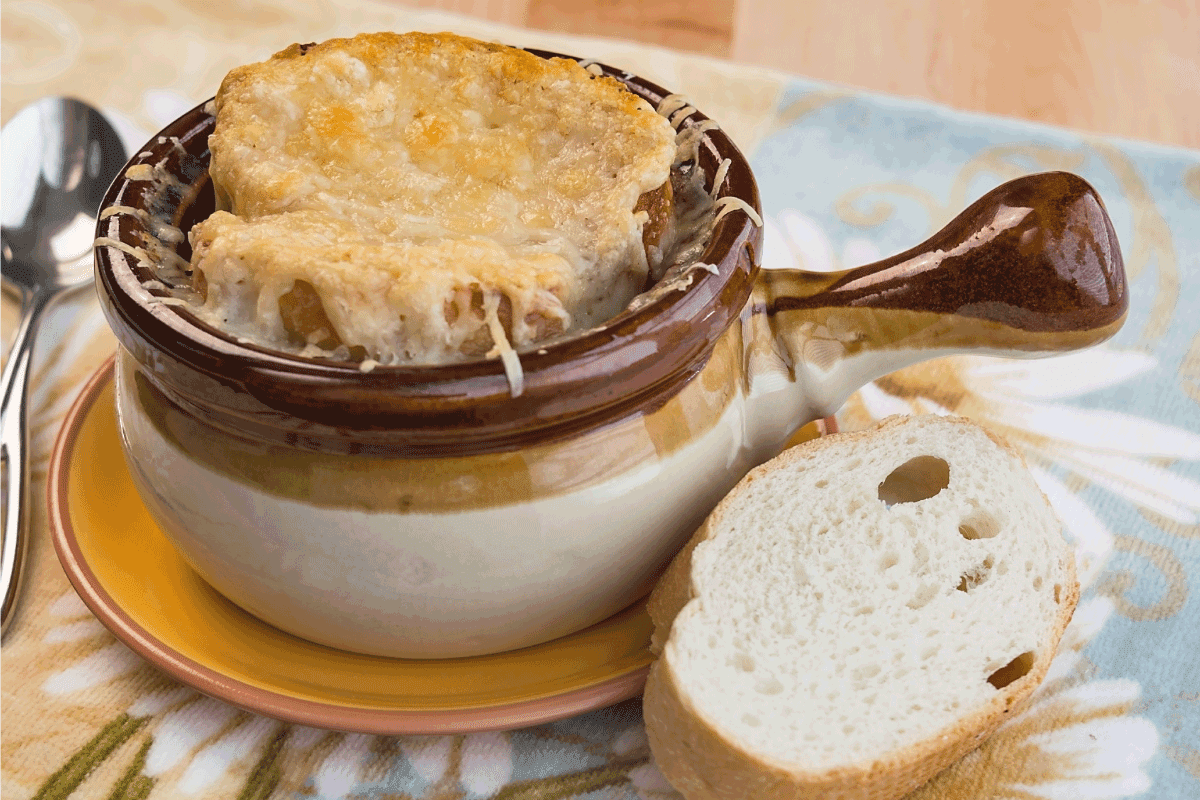
In Closing
French onion soup is one of the great comfort foods you can make as a home chef. The warmth and flavor you get out of a well-executed bowl are almost unmatched. Home cooks can be somewhat intimidated by the steps taken to execute French onion soup properly, but it's more than doable with a bit of practice.
We hope this article helped you figure out just how best to unlock the potential of onions for your soup. As the star of an excellent French Onion, knowing how to handle them best will give you the ability to serve your family delicious meals for years to come.


![A delicious baked onion soup with French bread on the table, 9 Lipton Onion Soup Mix Substitutes [Including Homemade]](https://kitchenseer.com/wp-content/uploads/2021/12/A-delicious-baked-onion-soup-with-french-bread-on-the-table-250x250.jpg)

